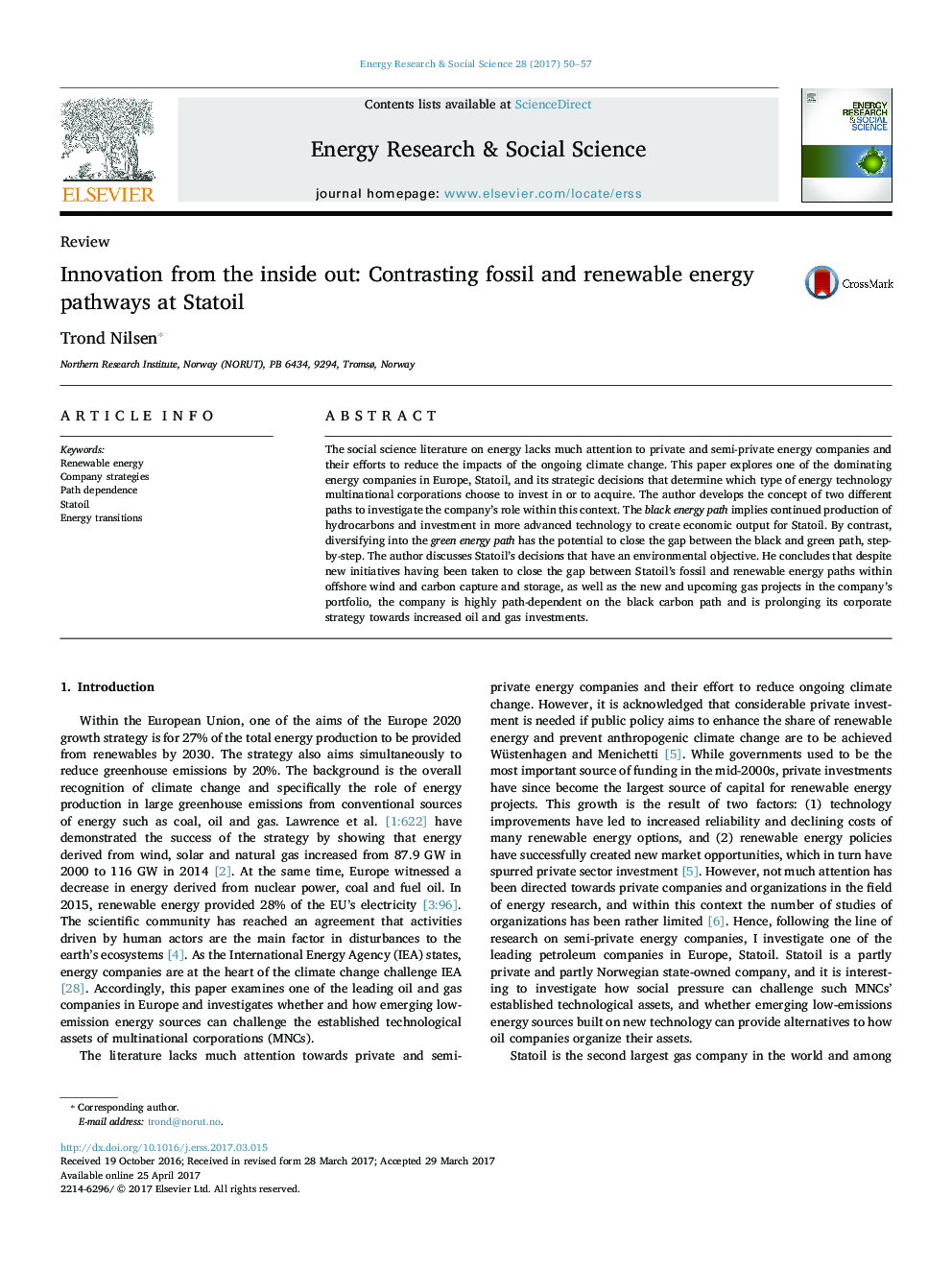| Article ID | Journal | Published Year | Pages | File Type |
|---|---|---|---|---|
| 6463966 | Energy Research & Social Science | 2017 | 8 Pages |
The social science literature on energy lacks much attention to private and semi-private energy companies and their efforts to reduce the impacts of the ongoing climate change. This paper explores one of the dominating energy companies in Europe, Statoil, and its strategic decisions that determine which type of energy technology multinational corporations choose to invest in or to acquire. The author develops the concept of two different paths to investigate the company's role within this context. The black energy path implies continued production of hydrocarbons and investment in more advanced technology to create economic output for Statoil. By contrast, diversifying into the green energy path has the potential to close the gap between the black and green path, step-by-step. The author discusses Statoil's decisions that have an environmental objective. He concludes that despite new initiatives having been taken to close the gap between Statoil's fossil and renewable energy paths within offshore wind and carbon capture and storage, as well as the new and upcoming gas projects in the company's portfolio, the company is highly path-dependent on the black carbon path and is prolonging its corporate strategy towards increased oil and gas investments.
